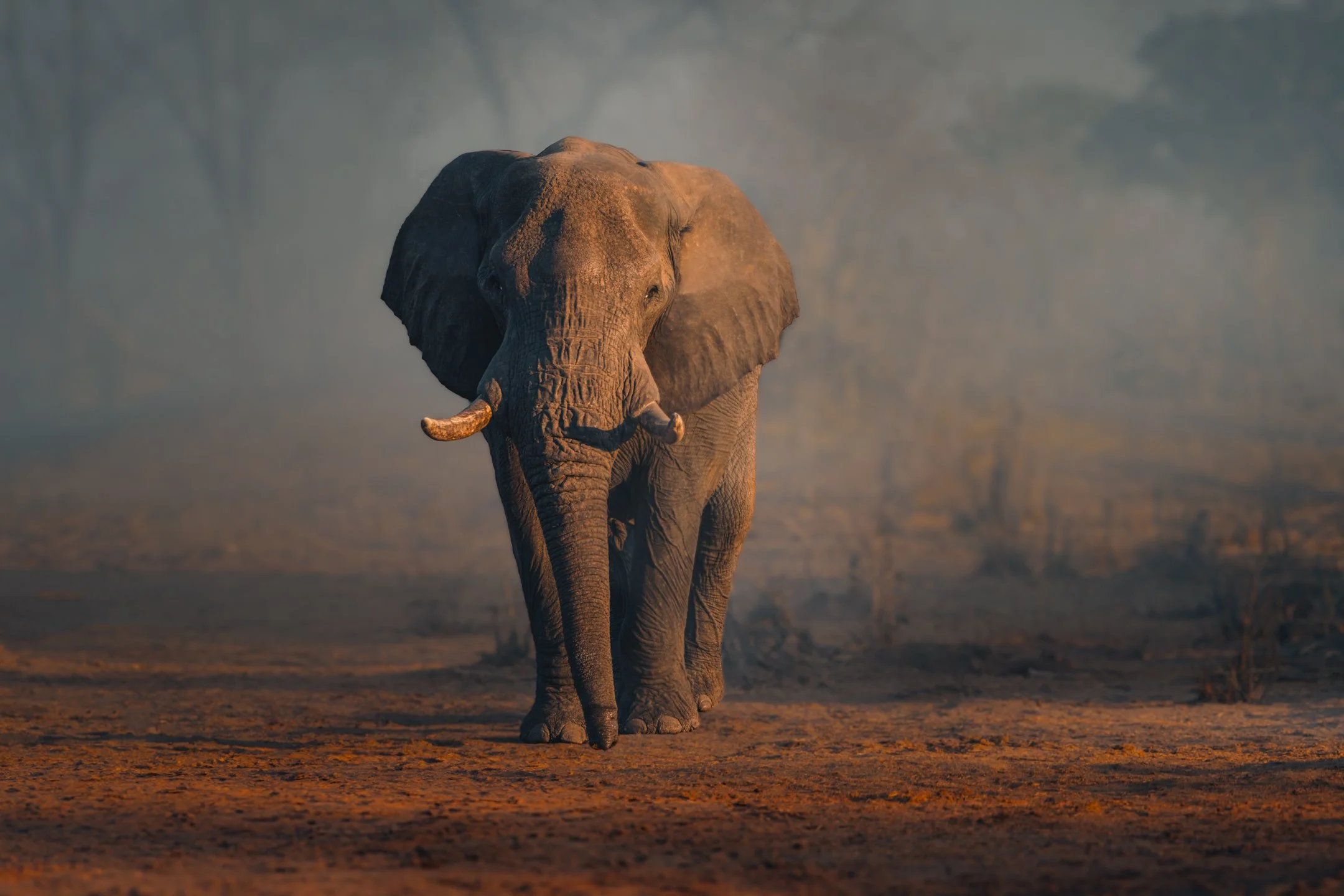THE ONGOING THREAT to African Elephant Populations
Majestic. Intelligent. Deeply social. African elephants are among the most iconic and awe-inspiring animals on Earth—but they are also under siege.
From the sweeping floodplains of Botswana to the forests of Central Africa, Loxodonta africana, the African savannah elephant, is fighting for survival in a rapidly changing world. Despite global awareness campaigns and increased enforcement, African elephants remain one of the most heavily poached mammals in the world today.
Ivory, Habitat Loss, and the Mounting Crisis
The main driver behind the decline of African elephant populations is still, tragically, the demand for ivory. Poaching peaked between 2009 and 2016, when it’s estimated that over 30% of the continent’s elephants were lost—a staggering figure that reflects the scale of the slaughter.
Today, approximately 415,000 African elephants remain in the wild, scattered across 18 countries in sub-Saharan Africa. In the last century alone, we’ve lost 90% of their population, and the pressure hasn’t let up. Every day, an estimated 55 elephants are killed for their tusks, feeding the illegal ivory trade that continues to thrive in parts of Asia.
But poaching is only one part of the threat. As human populations expand, elephants are losing access to critical landscapes. Roads, farms, fences, and settlements increasingly fragment their migratory routes and feeding grounds.
And for animals that consume up to 300 pounds (136 kg) of vegetation daily, the loss of access to their natural food sources is devastating. Elephants are browsers and grazers—feeding on grasses, roots, bark, fruit, and leaves. Their foraging plays a vital ecological role, shaping the environment and making way for countless other species. But when ancient migratory corridors are severed, or when waterholes dry up due to overuse and climate change, their survival hangs in the balance.
The Cost of Isolation
Elephants are naturally wide-ranging, migratory animals. They require large, connected landscapes to survive—not only to find food and water but also to maintain their intricate social networks. When these landscapes are broken up, elephants are forced into smaller areas where competition increases and conflict with humans becomes inevitable.
In regions like the Okavango Delta, seasonal flooding presents yet another challenge. But African elephants, ever adaptive, have a secret strength: they are powerful swimmers. Using their trunks as snorkels, they can cross channels and flooded plains in search of new foraging areas. This ability is not just a quirk of biology—it’s a survival tactic, especially in areas where seasonal movement is vital.
But even this remarkable skill can’t save them from the dangers of fencing, agriculture, and infrastructure that restrict access to water or force them into high-risk areas. In short: the elephant’s ability to roam—swim, forage, and migrate freely—is being steadily stolen from them.
10 Fascinating Facts About African Elephants
Despite these challenges, African elephants remain one of nature’s most fascinating creatures. Here are just a few incredible facts that showcase their brilliance:
They’re the largest land mammals on Earth, with males weighing up to 6,000 kg.
Their trunks contain over 40,000 muscles, capable of immense strength and delicate control.
They mourn their dead, displaying behaviours associated with grief and memory.
Elephants communicate with infrasound, which can travel kilometres undetected by humans.
Their large ears regulate heat, functioning like biological air conditioners.
They are “tusk dominant”, meaning they favour one tusk like humans favour a hand.
Female-led matriarchal herds form deep familial bonds passed across generations.
They recognise themselves in mirrors, demonstrating self-awareness rare in animals.
They can walk almost silently, thanks to soft, padded feet.
Elephants play, splash, and even babysit, revealing a joyful and complex social life.
A Conservation Success Story in Progress: Elephants Without Borders
Hope for Africa’s elephants lies in ambitious, cross-border conservation initiatives—like those led by Elephants Without Borders (EWB) in Botswana. Based in Kazungula, where the borders of Botswana, Namibia, Zambia, and Zimbabwe converge, EWB conducts vital research on elephant movements, ecology, and the impact of human development.
Operating across southern Africa, EWB works with governments, researchers, and communities to protect key migration corridors and promote coexistence between elephants and people. Botswana, in particular, is a stronghold for elephants—thanks in large part to its forward-thinking approach to conservation and the vast protected areas of the Okavango Delta.
By tracking elephant herds with satellite collars and gathering long-term data, EWB is helping us understand how elephants use the landscape—and how we can preserve it.
How You Can Help
Support reputable conservation organisations like Elephants Without Borders.
Never buy ivory or wildlife products—regardless of origin.
Choose ethical safari operators who invest in conservation and community development.
Raise awareness by sharing articles, donating, or simply talking about the issue.
Final Thoughts
To watch elephants in the wild—whether lumbering across an open plain or swimming across a flooded channel—is to witness one of the last great wonders of the natural world. But it’s also a reminder that these giants are at a tipping point.
As a wildlife photographer, I’ve had the immense privilege of being in their presence. But every frame I capture is laced with urgency. The African elephant’s survival is not guaranteed. It depends on us—on awareness, action, and the will to protect not just a species, but an entire ecosystem that depends on them.
Unless stated otherwise, all creative, photographic and written content in this article is protected.
© 2024 Drew Sproule | Fine Art Nature Photography



